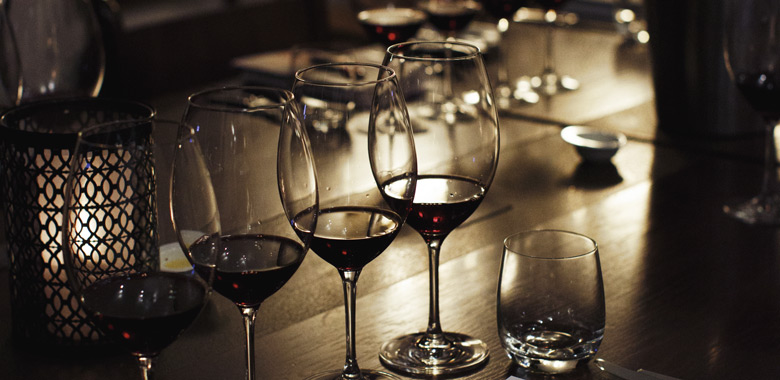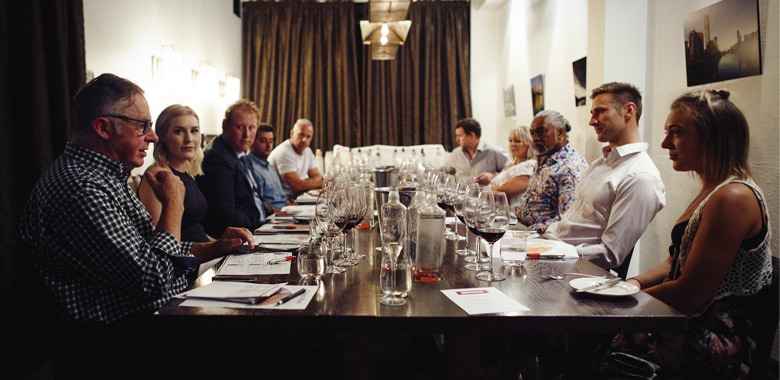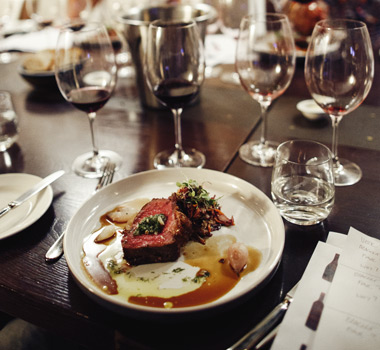
Wine
Merlot Members Tasting
Merlot is a mystery to a lot of us. Many other red wine grapes have much more recognisable varietal personalities, giving them more immediate impact than Merlot. Cabernet Sauvignon, for example, nearly always says ‘Cabernet’ emphatically, via varietal cues that cut across the vagaries of region, climate, winemaking, and culture. Blackcurranty character, leafy austerity, angular, savoury personality and tannic backbone mark Cabernet-based wines, apparent even in warmer, riper versions. So it is with Pinot Noir’s distinctive fruit characters, softness and silken structure. Pinot Noir says Pinot Noir loud and clear, but what of Merlot?
Confusing Merlot’s identity crisis is the multiplicity of different styles available. In the coolest places, the variety’s leafiness can become too herbal and green; in the warmest places, it can be big, jammy and soupy. When overcropped and made on an industrial scale, Merlot can be washed out, sometimes sweet, a simple quaffer. In the middle of all this, we find Merlot’s ideal spot in skillfully tended vineyards in temperate areas. Here we encounter suggestions of plum, mulberry and fruitcake, raspberry, cherry, violet, spice and dried herb hints, maybe chocolate and olive from oak input. These wines tend to be soft, plump and juicy, worthy of plenty of attention as a friendlier type of red wine than tannic Cabernet or Shiraz. Compared to Cabernets, Merlots are generally much lower in methoxypyrazines too. These compounds in grapes give raw, green, herbaceous characters that can be shrill and unpleasant, another reason for good Merlot’s friendly personality.

Cabernet’s comrade
Merlot’s historic role as a blending variety also tends to compromise its individual identity. In its Bordeaux home, its early ripening characteristics act as insurance against the later ripening Cabernet Sauvignon, especially across difficult vintages. Merlot develops higher sugar levels and riper fruit characters weeks before Cabernet, and it’s planted much more widely in the Bordeaux region as a result. Its rich, supple personality tempers Cabernet’s more severe traits in a blend, and it usually doesn’t need nearly as much mellowing bottle age to be gluggable.

.jpg)
Around the world
Merlot’s fortunes have been improving worldwide over the last few decades as plantings have expanded into new territory. Chile has been at the forefront and has built a large export market for easy-sipping Merlot.
In the Old World, Merlot has been replacing other more mediocre varieties in vineyards across the European continent. Its international appeal and reputation for friendly wine has supported vast new plantings in places like France’s south-west as the French hit back after the inroads New World wineries have made in their traditional markets. French wine drinkers possibly don’t know Merlot by name very well, but they like it and so do their international customers.
American consumers have an idea what to expect from Merlot – softness, maybe a little sweetness, easy drinking. New Zealanders are also familiar with Merlot’s easy manners and the variety has traditionally sparred with Pinot Noir as the red of choice for Kiwis. In recent times, NZ Pinot has been ascendant, but Merlot is still in the mix. Generally, Australians are much less Merlot-aware.
No mention of Merlot can be made without referring to the cult American movie Sideways. In the USA, Merlot is the second most popular red wine grape after Cabernet Sauvignon, mainly due to vast quantities of soft, low tannin reds that appeal to wine novices. In Sideways, made in 2004, wine tragic and wine snob Miles rails loudly against Merlot. “If anybody orders Merlot, I’m leaving. I am not drinking any f…ing Merlot,” he declares, and his comments contributed to a drop in Merlot sales in the USA, the UK, and probably Australia. Merlot has recovered, but I suspect a slightly negative perception lingers, helped by Merlot’s lack of a distinct varietal identity in the minds of many consumers.

Taste expectations
So to discover what makes Merlot tick, we recently gathered together a panel of eight keen Merlot fans from the ranks of Wine Selectors Members for a tasting dinner at Melbourne’s Papa Goose restaurant. Joining them were Selector publisher, Paul Diamond and yours truly. Sixteen wines from across Australia were served masked in brackets of four. South Australia was represented by seven wines from a diversity of regions, with the emphasis on somewhat cooler places like the Adelaide Hills, Eden Valley and Limestone Coast/Coonawarra regions. Victorian wines included examples from the Yarra Valley, the Pyrenees and the warm vineyards of Rutherglen, while New South Wales and Western Australia presented a cross-section of vineyard sources.
As we sat down to taste, we made a quick survey of what the Members looked for in Merlot.
“I like Merlot because it’s not too heavy,” said Wine Selectors Member, Darren Dean, “It’s soft, easy to drink, sweet and smooth.”
Fellow Member Ingrid Fraser agreed. “They are soft, complete wines, plump and lovely,” she said.
Paul looked for, “consistency of mouthfeel, smooth texture, seamlessness.”
Softness and smoothness were terms most tasters used to describe Merlot’s general appeal. Were these characteristics reinforced as the dinner progressed and the group came to terms with the wines served?


Paired to perfection
Matching food and wine is much discussed in the gastronomic world. Carefully constructed dishes, devised with a particular type of wine in mind, can offer experiences that transcend the simple idea of eating and drinking.
When we consider food-friendly wines, the softer, lighter, lower tannin drops offer more food compatibilities than bigger, tougher wines. Thus, Pinot Noir, or softer, cool climate style Shiraz, works well where the big bruisers fall short. On this basis, Merlot should excel as a food wine, and as the dinner progressed, the pairings proved harmonious.
This was due to Papa Goose chef Neale White’s intuitive ability to create Merlot-compatible dishes to complement the wines.
The four course menu began with a superb dish that echoed Merlot’s charm. Cured and smoked duck breast was accompanied by beetroot, raspberry and red sorrel, all flavours that dovetailed superbly with the first bracket of wines.
Gnocchi with king oyster mushroom, tarragon and amaretti cream pointed up the depths of the following group of four wines, with rich flavours and textures woven through aromatic ones.
Eyebrows were raised when we saw that the porterhouse with red wine sauce was coming with caraway coleslaw – caraway can be formidable – but the dish’s subtlety actually drew out some of the foresty, herbal notes in the wines, making the sum of the parts far more than the individual inputs.
Cheese can be problematic with a lot of wines, but the mild, mature Pynegana Cheddar, served to finish dinner, had fruity accompaniments of chutney, quince paste and muscatels to temper it. Merlot stood up to the entire menu, confirming its delicious suitability at the table.
The dinner confirmed in everybody’s eyes that Australian Merlot does indeed have its own distinct personality, and that it deserves to be centre stage alongside better-known brethren like Shiraz, Pinot Noir and Cabernet Sauvignon. Merlot should be on everybody’s shopping list.